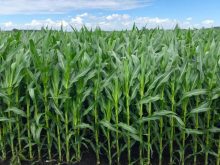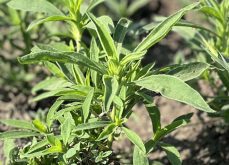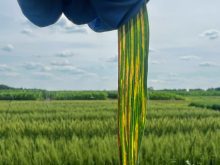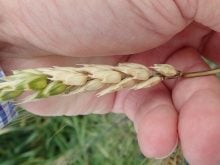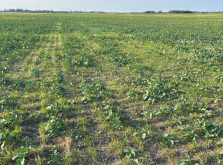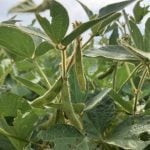If you are a barley grower who likes to roll fields to make them level before harvest, don’t do it the day before your agronomist arrives to do field scouting. It makes it difficult for them to find the weeds.
That may be one important reason to roll fields earlier in the spring as opposed to later, but as an ongoing research project conducted by Farming Smarter, the applied research association in southern Alberta, researchers are learning later rolling — such as when the crop is at the first-node stage — can actually reduce barley yield and quality. That conclusion, after a couple of years of field research, is the opposite of what many farmers believe.
The investigation into timing of field rolling was initiated by longtime southern Alberta agronomist George Lubberts, owner of Complete Agronomic Services at Nobleford, just northwest of Lethbridge, Alta.
Read Also

Claas brings 1000 Series SP forage harvesters to Canada
In mid-August, Claas unveiled its new line of Jaguar forage harvesters at an event in Visalia, California, deep in the heart of that state’s dairy region.
Lubberts says it is a fairly common practice for farmers to roll fields to make them level for improved harvestability, but the timing was an issue.
“There has been sort of a rural myth that if you roll barley once the crop is up and growing it will fill out better and yield better,” says Lubberts. “But the fact is that myth is completely untrue.

“This research by Farming Smarter is really reinforcing what I have been seeing in the field over the years. Rolling fields a bit later in the spring actually lowers biomass yields (if barley is cut for silage) and also affects grain quality. And it seemed that often I would arrive at farms to scout fields for weeds just after the crop had been rolled. I figured there needed to be some better timing.”
Started as contract research
The contracting division of Farming Smarter was hired by Lubberts to evaluate the timing of field rolling with research projects in 2020 and 2021. Lubberts is pleased to share those research results with farmers.
And as a followup to that, Farming Smarter was advised earlier in 2022 that the provincial ag research agency known as RDAR (Results Driven Agriculture Research) will be funding, starting this year, three more years of research into the timing of field rolling not only of barley crops but soft wheat as well. The research will be conducted in three different southern Alberta locations. Both cereal crops are widely used under irrigation along with some dryland farming operations for silage production.
A couple of factors motivated farmers to roll barley crops well after the crop was up and growing — often around the fourth-leaf to first-node stages. First was the myth that later rolling improved silage production. And, second, farmers wanted to leave fields a bit rough as long as possible after seedlings emerged to protect the crop from wind shear, “particularly in southern Alberta, but we’re also seeing more severe winds in other regions, too,” says Lubberts. “Winds are strong enough to essentially sandblast crop seedlings if they don’t have some degree of protection.”
If the field is left a bit rough after seeding, the rocks, soil ridges and clumps of soil help shield seedlings from the wind. A lot of farmers would wait until the crop reached the first-node stage to roll fields, pushing any rocks into the soil and packing down soil clumps and ridges.
“Silage operators like to run the harvester head low to cut as much of the barley crop as possible,” says Lubberts. “But if the harvester is picking up rocks and dirt that can cause thousands of dollars in damage to the harvester. Some custom operators won’t harvest fields unless they’ve been rolled. Or if they aren’t rolled they just raise the cutter table several inches off the ground, which leaves a lot of barley behind.”
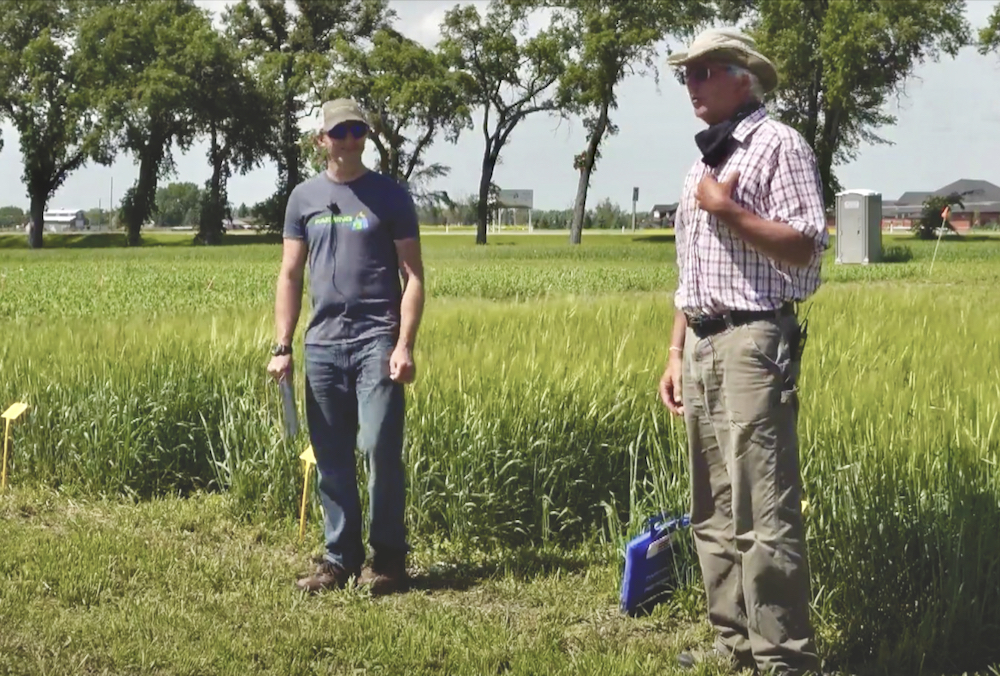
Trevor Deering, a research specialist who oversees Farming Smarter custom projects, says he evaluated several different timings for rolling plots of CDC Bow barley in the first two years of the research project.
Different timings included:
- untreated check (no rolling);
- field rolling at one to three days post-seeding;
- field rolling at the first-, second-, third- and four-leaf stages, respectively; and
- field rolling at the crop’s first-node stage.
The plots were seeded at 300 seeds per square metre and rolled once with a water-filled drum roller in the same direction as the crop was seeded.
“Over the first two years, we looked at crop production and quality features such as disease incidence, biomass, grain yield and quality and crop height. And in the second year, silage quality,” says Deering.
On just about all counts, plots that were rolled later, at the four-leaf and, particularly, at the first-node stages, showed poorer results than those plots rolled at any of the earlier timings.
From the plots rolled at the first-node stage, measurements showed the crop was shorter, had a bit more disease, took longer to rebound, had more lodging, lower silage (biomass), lower grain yield and reduced quality.
For the new research trials starting in 2022, Farming Smarter will look at both barley and soft white wheat — both popular crops for silage — with plots seeded at Lethbridge as well as on fields within about an hour of Lethbridge at Bow Island and Enchant.
The plots will be exposed to both light and heavy rolling (water and no water in the drum roller) and time of rolling will range from crop pre-emergent (one to three days after seeding) to the two- to three-leaf crop stages, the three- to five-tiller stages and the two-node stage.
Lubberts says he is interested to see the results from the expanded research trials involving two crops at three different locations.
“Right now, I am urging farmers not to wait for later growth stages to roll their fields,” says Lubberts. “My advice today is to roll those fields as soon as they can see plants growing in the drill rows.”




